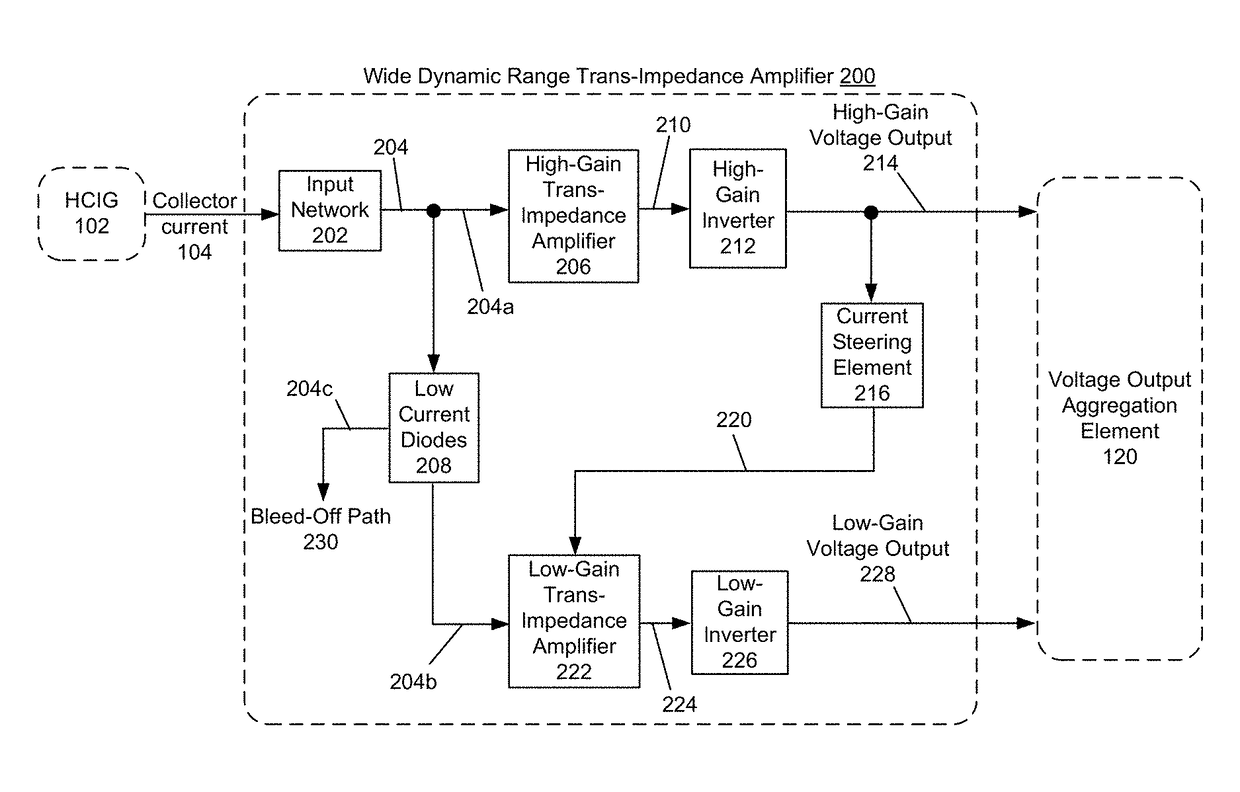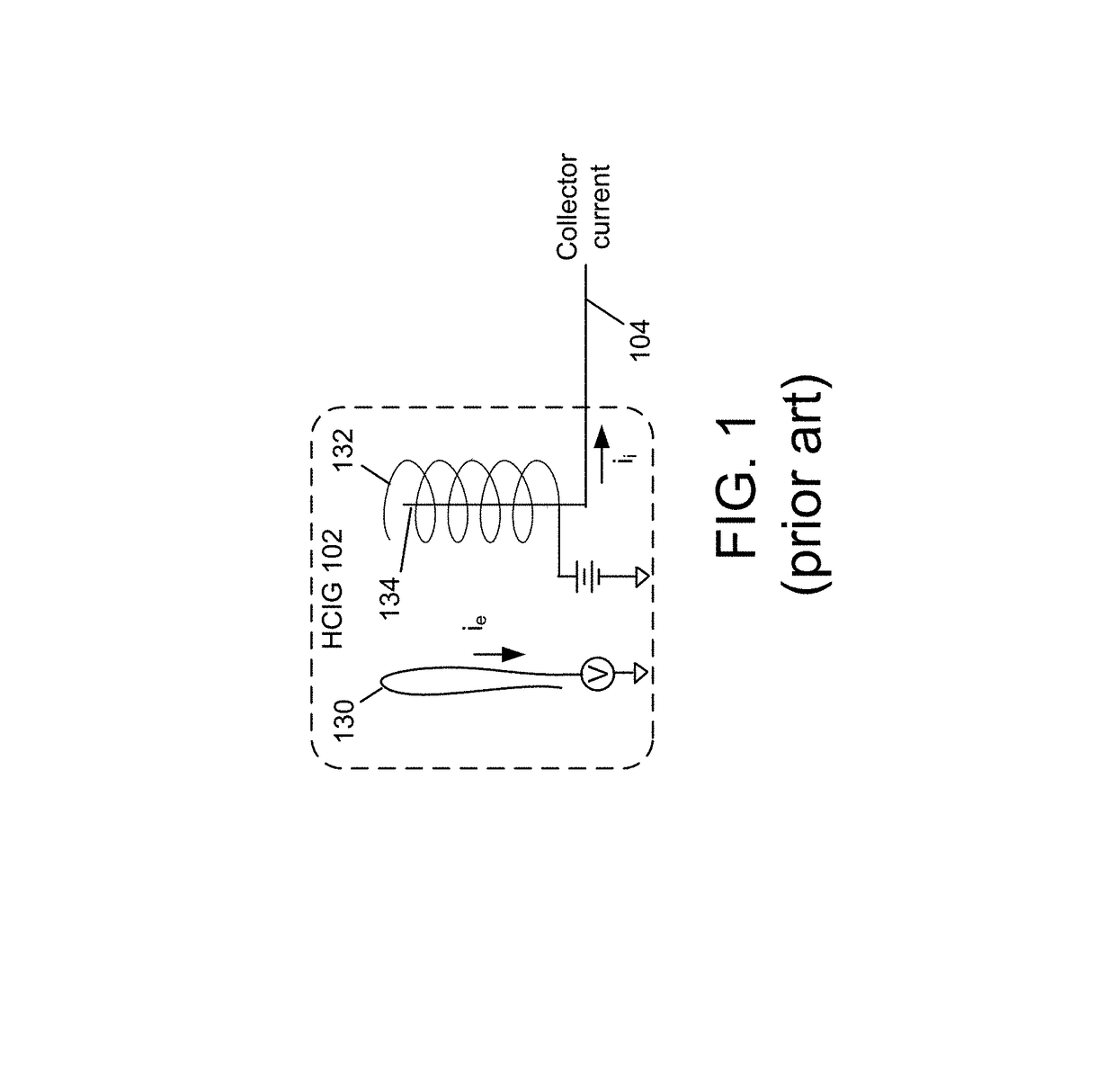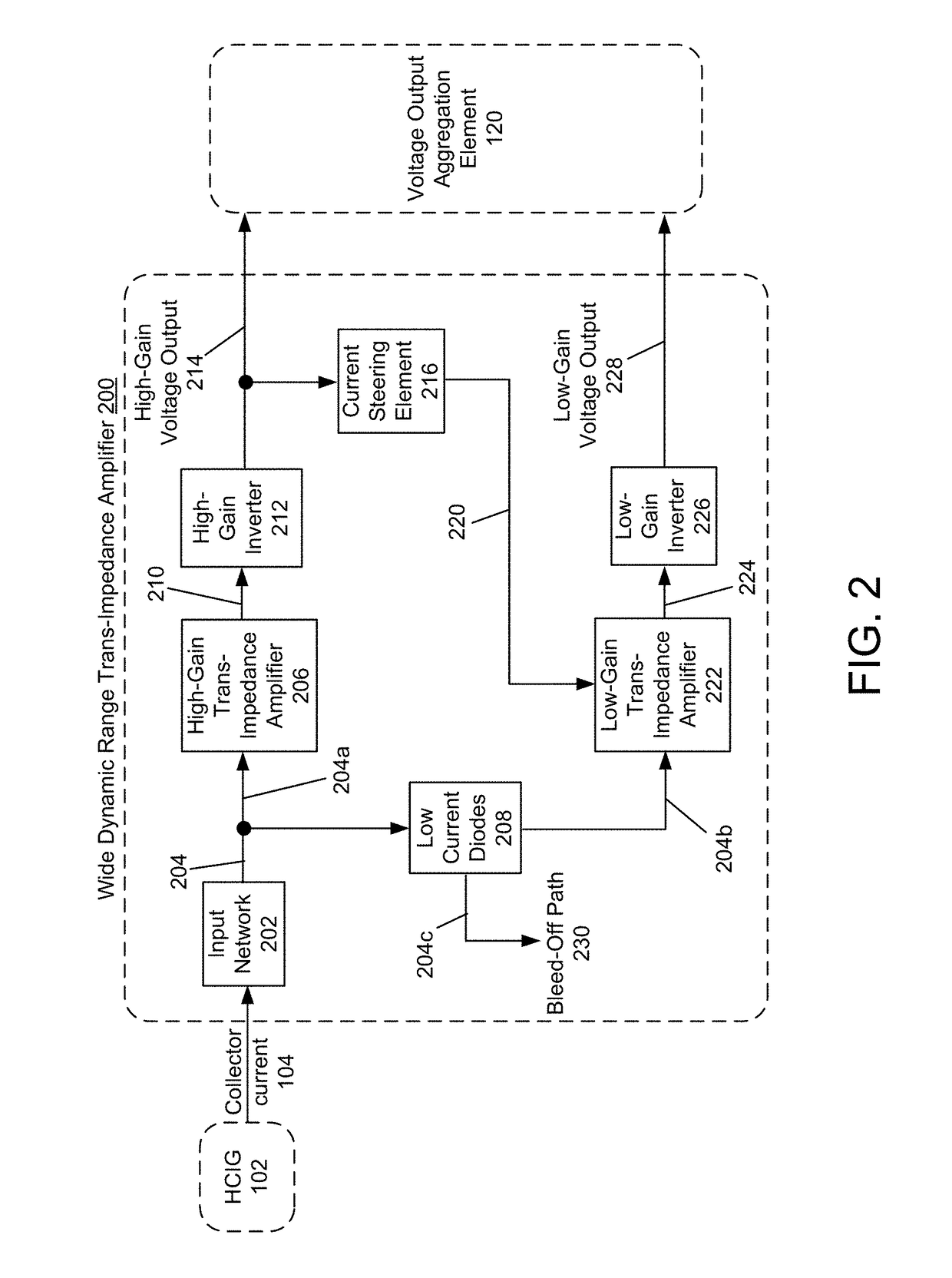Trans-impedance amplifier with increased dynamic range
a technology of trans-impedance amplifier and dynamic range, which is applied in the direction of amplifier combinations, negative-feedback-circuit arrangement, instruments, etc., can solve problems such as discontinuities in the overall output, and achieve the effect of reducing the accuracy and dynamic range of the wide-dynamic-range amplifier
- Summary
- Abstract
- Description
- Claims
- Application Information
AI Technical Summary
Benefits of technology
Problems solved by technology
Method used
Image
Examples
Embodiment Construction
[0040]A description of example embodiments of the invention follows.
[0041]The teachings of all patents, published applications and references cited herein are incorporated by reference in their entirety.
[0042]FIG. 2 illustrates an example embodiment of a wide dynamic range trans-impedance amplifier 200 according to the invention. FIGS. 3 through 9 provide more detail of each of the example block elements of the embodiment shown in FIG. 2. The embodiments presented in FIGS. 3 through 9 are not intended to be limiting, but are rather intended to provide an example description of a specific implementation of the described embodiments.
[0043]Input network 202 receives collector current 104 from HCIG 102 (see also FIG. 1). The input network 202 provides conditioned collector current 204 to a high-gain trans-impedance amplifier 206 and also to a set of low current diodes 208. A first portion of conditioned collector current 204 flows to the high-gain trans-impedance amplifier 206. A second...
PUM
 Login to View More
Login to View More Abstract
Description
Claims
Application Information
 Login to View More
Login to View More - R&D
- Intellectual Property
- Life Sciences
- Materials
- Tech Scout
- Unparalleled Data Quality
- Higher Quality Content
- 60% Fewer Hallucinations
Browse by: Latest US Patents, China's latest patents, Technical Efficacy Thesaurus, Application Domain, Technology Topic, Popular Technical Reports.
© 2025 PatSnap. All rights reserved.Legal|Privacy policy|Modern Slavery Act Transparency Statement|Sitemap|About US| Contact US: help@patsnap.com



